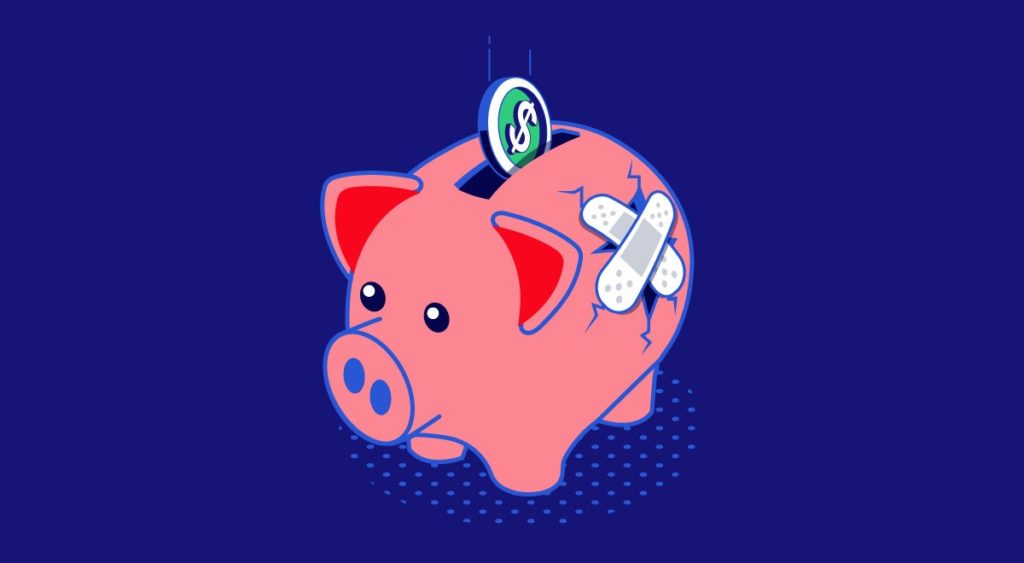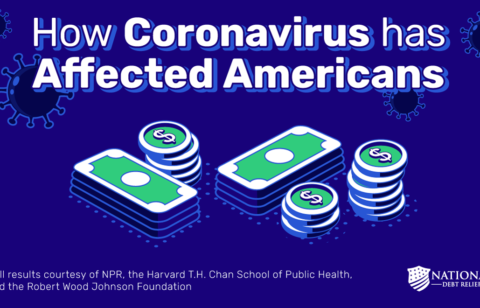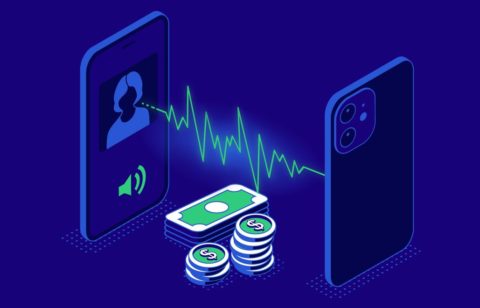Despite the current uncertain times, the U.S. economy is doing well by many standards, and as of January 2019, unemployment was at a low of 4%. These conditions should mean that Americans have more money to put into savings accounts and save for the future.
Unfortunately, this isn’t the case. Approximately 29% of Americans have more credit card debt than they have money in their savings accounts, up from 21% in 2018. A major problem with this lack of savings isn’t just that people aren’t saving for the future and retirement; they’re not putting aside sufficient funds to cover even a small emergency. According to the Federal Reserve, 40% of Americans couldn’t handle a $400 emergency, which means when facing a relatively small, unexpected expense such as a car repair or emergency room visit, those 40% will have to turn to credit.
Also according to the Federal Reserve, Americans used to be much better at saving for a rainy day. In the ’60s and ’70s, the savings rate was more than 10% of a person’s disposable income. After dipping significantly, those savings were boosted after the recession, but are now at an abysmal 2.4%. When inflation is added in, there’s virtually nothing being saved.
Reasons for Not Saving
Most people understand the importance of saving and fully intend to put money away, but too often, there’s simply nothing left after bills are paid. Of people not saving, 39% say they’re not saving because of high expenses and bills. A recent survey found the top three reasons for not saving to be:
- High cost of living
- Low salary
- Debt
High cost of living
Living in the United States gets more and more expensive every year. Average monthly rent has skyrocketed 28% over the last 10 years. Add to that the rising cost of healthcare and inflation, and consumer prices that rose 2.9% in 2018 mainly due to the high cost of housing, and it’s no wonder people are having difficulty saving.
Low salary
Salaries aren’t rising alongside everything else. During the last 10 years, the median income has gone from $58,149 in 2007 to $61,372 in 2017, a mere $3,223 increase, well below the cost of living increases. Despite the strong economy and tax cuts for large businesses, 60% of Americans didn’t get a pay raise in 2018.
Debt
Fewer and fewer people are able to cover the bills they currently have. The New York Federal Reserve estimates that more than 7 million Americans are currently at least 90 days late on their car payments. This number is more than a million higher than it was in 2010, shortly after the 2008 financial crisis. This number may suggest that the economy isn’t benefiting everyone. Last year, there was a $584 billion increase in total auto loan debt, bringing the total auto loan debt to $1.2 trillion. This means a larger pool of consumers to fall into delinquency, but the percentage of delinquent accounts was on the rise nonetheless.
The latest government shutdown, the longest in the nation’s history, caused 800,000 unpaid workers to dip into their savings accounts if they had any. Although most of those workers received back pay, the countless contract workers and businesses that rely upon those government workers, such as area restaurants and stores, won’t. Many farming communities have been hit hard by the tariffs, and despite relief aid from the government, they’re still struggling to make ends meet.
Americans continue to accrue huge amounts of debt. In 2018, student loans reached an all-time high of $1.5 trillion; credit card and other revolving debt topped $1.027 trillion; and medical bills continue to climb as insurance companies cover less and less and costs for care go through the roof. With Americans increasingly finding themselves drowning in debt, putting money into a savings account is a luxury they simply can’t afford. When emergencies arise, those without an emergency fund have only one place to turn: more debt. It’s a never-ending cycle.
Looming Trouble
So far, the economy is humming along, keeping unemployment low, but economic conditions always fluctuate, and highs are usually followed by lows. When the economy begins to weaken, employers will begin to lay off workers; people may be forced to take jobs for less pay; and anyone with no emergency fund will be in trouble. If we learned anything from the recent shutdown, it’s that too many people are ill prepared for an interruption in their income stream. For people without a paycheck, no one will give them a line of credit. With no backup, when the next recession hits, those who haven’t been able to put money into an emergency fund will have no safety net to catch them.





